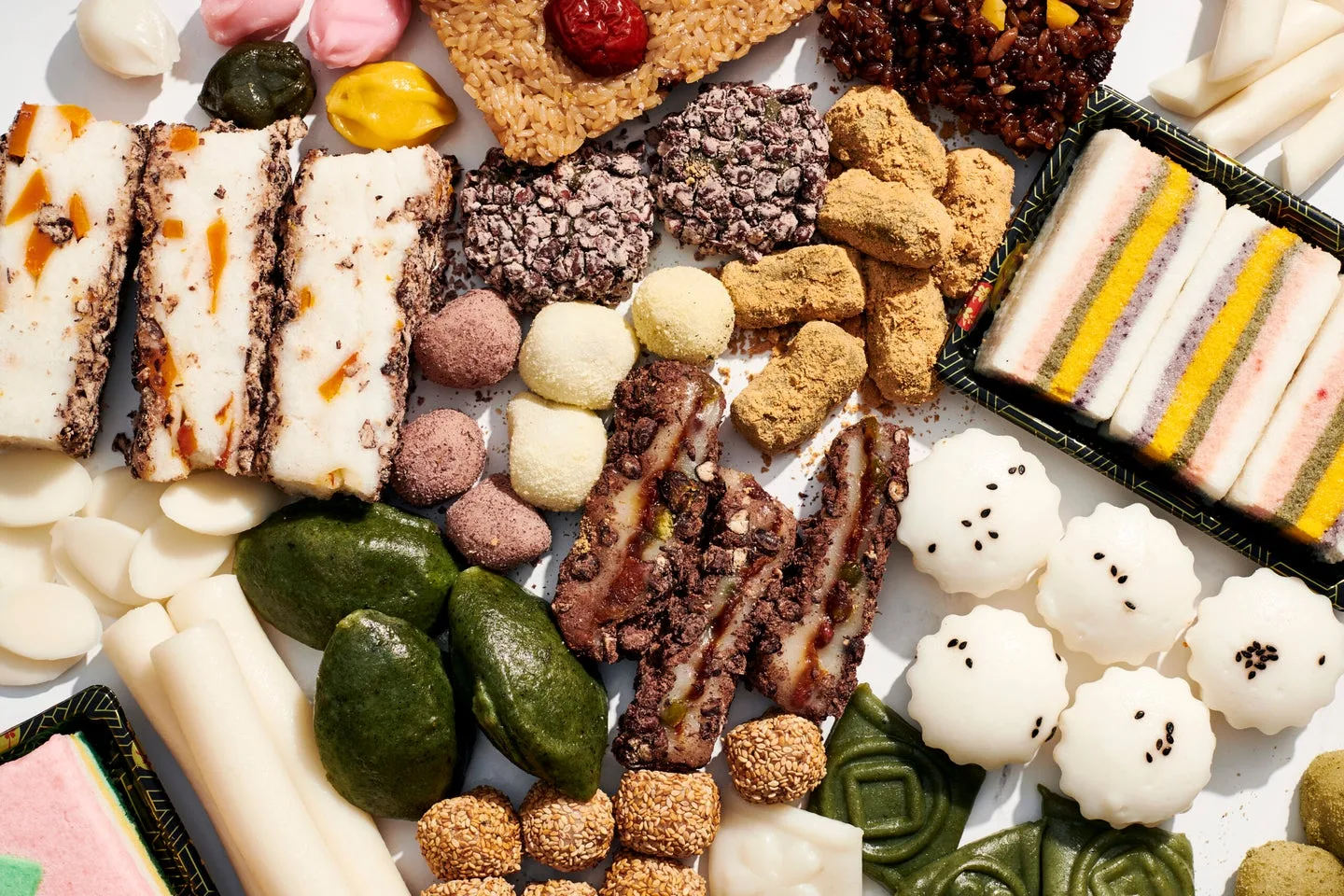Photo: Murray Hall • Food Styling: Jessie YuChen
Tteok, or rice cakes, manifest in seemingly countless shapes, textures, colors, and flavors across the Korean peninsula. Both an ingredient and a dish, tteok can be turned into a full meal like tteokbokki (stir-fried rice cakes) or tteokguk (rice cake soup), or eaten on its own as a snack or dessert. The cakes are ubiquitous in every facet of Korean life, enjoyed as casual street food and at occasions like Seollal (Lunar New Year), Chuseok (a mid-autumn harvest festival), dols (first birthday celebrations) and funerals.
All tteok start with rice—either maebssal (short-grain rice) or chapssal (sticky rice, also known as glutinous or sweet rice). Maebssal produces a drier, more porous texture, while chapssal yields moister, more elastic tteok. The time-consuming process of transforming these grains into rice cakes generally falls into one of five broad categories: pounding, steaming, shaping, boiling, and frying. Depending on the technique, the texture can range widely from soft and powdery, to thick and chewy, to light and crispy.
Though industrial machines assist much of tteok production today, many people still make it by hand. Either way, it is a labor of love. Second-generation tteok maker Eunice Park, owner of the Korean bakery Lucky Rice Cake in Southern California, grew up lifting 50-pound bags of rice and hunching over steaming trays in her late father’s shop. Now, she carries on his legacy by not only offering traditional tteok but also taking family recipes in a new direction,






